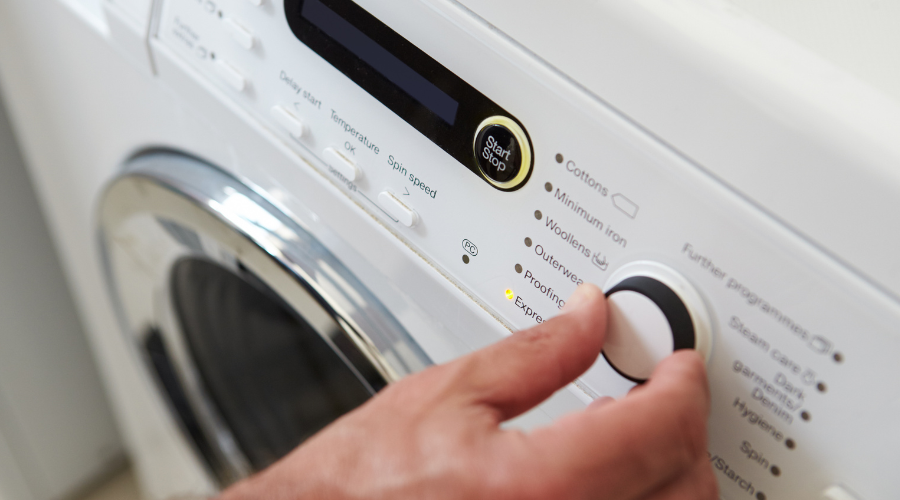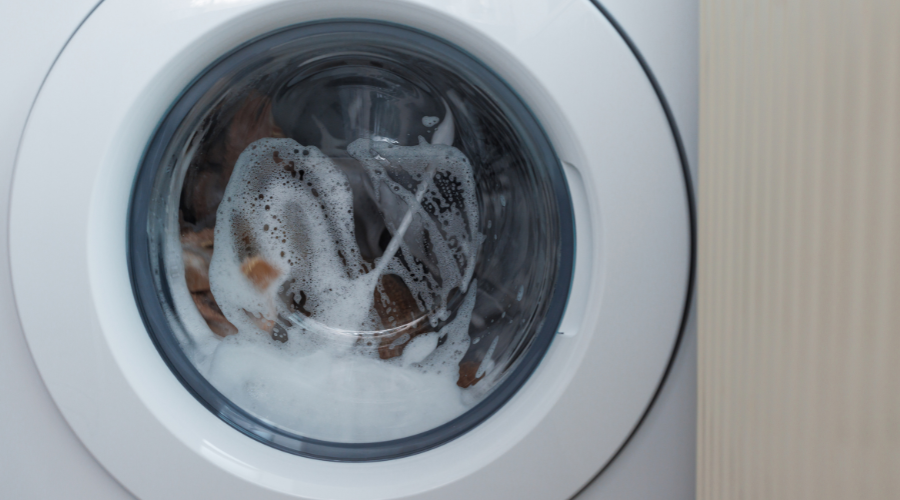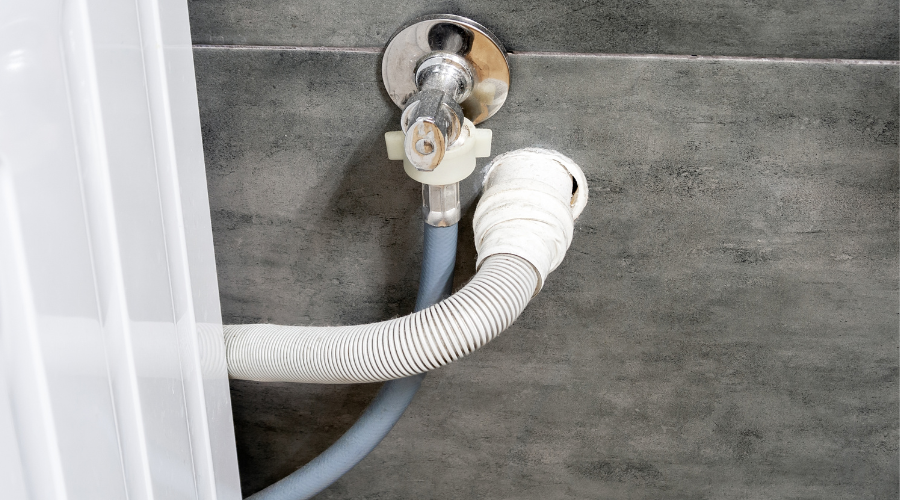How to Empty a Washing Machine Filled with Water

Washing machines play a crucial role in every household. However, encountering issues such as finding your laundry submerged in water, coming across an error code, or realizing that your machine has ceased functioning can be frustrating. This guide will explore methods to diagnose draining problems, provide steps to drain your washer effectively, and offer solutions to prevent future occurrences.
What to Do if Your Washing Machine is Full of Water
You should never try to remove your laundry from the tub of your washer. Doing so can cause water to drip everywhere. Additionally, it’s inadvisable to transfer soaking wet laundry directly to the dryer because it hasn’t undergone the spin cycle to eliminate excess water. Manual removal of water from your laundry is not only messy but also labor-intensive. Instead, it’s wise to address any issues with your washing machine while leaving the laundry inside. Numerous reasons may prevent your washer from draining, and many of these issues can be resolved without needing to remove the washer’s contents.
Possible Reasons for Your Washer Not Draining
Before trying to resolve the issue, it is crucial to understand the reasons why your washing machine might be malfunctioning. Some of the reasons include the following:
- A clogged drain hose: The drain hose can get clogged with lint or debris and if the water flow can’t get past the blockage, then the washer will not drain until the clog is removed.
- A broken drain pump: Usually, the drain pump is located behind the access panel. Its job is to pump the wastewaterWastewater is used water that contains contaminants, chemica... More through the drain hose. If the pump is broken, then the water cannot make it up and out of the drain hose.
- A broken lid switch: When the lid switch works it means it tells the machine that the door lock is engaged, and it can go through the next cycle. If the lid switch breaks, the machine may think the door is broken.
- A broken belt: Your washing machine works on a few rubber belts. Their job is to transfer motion from one part of the inner workings of the machine to another. Sometimes the belt can get damaged or slip out of place so the machine will stop working properly.
- A hose that is jammed or kinked: If the hose is jammed or kinked, it can prevent the water from flowing. If you’ve recently moved the machine, you should always check if the hose got kinked or jammed.
- A drain that is clogged: If you have a clog in your drainpipe, then there will be an issue with carrying the wastewaterWastewater is used water that contains contaminants, chemica... More out of your house.
- Water level control is broken: There are machines that have a plastic tube with a water level valve that your washing machine uses to figure out if there is water inside the tub. If it becomes broken or has another issue, it may not drain.
Please note that there are some issues that are more difficult to check for than others. Follow the below process to check and resolve the issue with your washing machine.

The Process for Draining a Washer Filled with Water
If you find that your washing machine is not draining, you can try the following to resolve the issue:
- Try using the spin cycle:
If your machine will allow it, try using the spin cycle and see if it drains your machine. You can also restart the whole wash to see if that works. At times, it may just be a clog or a kink that has caused a failure in drainage and a restart can get it to work again.
- Shut off the power and water supply:
Shut off the power and the water flow to avoid an electric shock or floodingFlooding is the overflow or accumulation of water in areas t... More. You can easily shut off the power in the breaker box and turn the water valve knobs that supply water to your machine.
- Remove and check your drain hose:
To locate the drain hose, look behind the washing machine. It’s typically attached to your washer on one end, with the other leading to an external drainpipe. Ensure the hose isn’t kinked or pinched. Gently remove the hose from the pipe to check for clogs, clearing any debris you find. After reassembling, turn the water and electricity back on. If the issue persists or no clog was found, remember to turn off the water and electricity before proceeding further.

- Check if the washer will drain with gravity:
Place a large bucket on the floor and put the end of the drain hose into it. Should the hose be free of clogs, gravity will naturally facilitate the water’s drainage. If the water does not drain and you’ve confirmed the hose is clear, the problem likely resides within the machine’s internal mechanism—this could involve the drain pump, a belt, the lid switch, or possibly a blockage in the drainpipe itself. Conversely, if the machine still fails to drain under these conditions, it suggests a more complex issue within the hose, potentially hidden from view.
- Check the inside mechanism of your washing machine:
Begin by inspecting the drain pump, lid switch, belts, and water level control. To access the drain pump, you’ll need to remove your machine’s panel. After removal, ensure there’s no dirt or other blockages hindering the parts’ movement. Sometimes, a simple cleaning of the pump is all that’s required. If the pump is clear, verify that all belts are properly aligned and functional. To test the lid switch, press it down while keeping the lid open; it should click into place. A failure to do so indicates a need for replacement. Continue to examine the other components of your machine diligently. Additionally, consulting the user manual can provide machine-specific troubleshooting advice. If at any point you feel unsure about these checks, it’s best to contact a professional technician for assistance.
- Make sure to check the drainpipe:
If the hose successfully drained into your bucket without revealing any internal mechanical issues, the next step is to inspect the drainpipe responsible for transporting wastewaterWastewater is used water that contains contaminants, chemica... More away from your home for clogs. To accomplish this, using a plumber’s snake might be necessary.
- Drain the machine manually:
Should you suspect a clog in the drain hose—which remains inaccessible—it’s imperative to detach the hose from the machine for a comprehensive inspection. Prior to this, manually draining the machine is a must to prevent water spillage when disconnecting the hose. Although not the most enjoyable task, having buckets and towels can significantly reduce the mess.
The manual may have additional troubleshooting tips specific to your machine. Top load washers and front load washers have very different configurations, for example. If you don’t feel comfortable working with the internal components of your washing machine, you might need to call a washer repairRepair is the act of fixing or restoring damaged property, m... More technician at this point.
Professional Water Damage Restoration

If an overflowing or leaking washing machine has caused water damage in your home it’s time to call the professionals. Highly trained water damage restoration technicians focus on meticulously cleaning, dryingDrying is the process of removing moisture from materials, s... More, and restoring your home or building to its original, pristine condition. Employing the latest in water mitigation technology and techniques, they offer comprehensive services designed to address every aspect of water damage. From initial assessment to the final touches of restorationRestoration is the process of returning a property to its pr... More, the goal is to ensure a rapid, efficient, and thorough restorationRestoration is the process of returning a property to its pr... More of your property, minimizing downtime and helping you get your life back on track with minimal disruption. Call RestorationMaster for water damage restorationWater damage restoration is the professional process of clea... More services.












